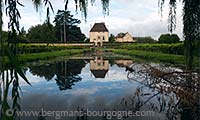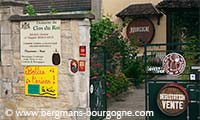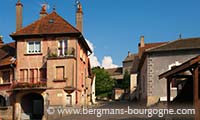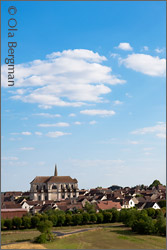

This part of Burgundy is entitled to the regional appellation Bourgogne Coulanges-la-Vineuse. It is an appellation that covers red, white and rosé wine and that the village shares with its neighbours – the communes of Escolives-Sainte-Camille, Jussy, Migé, Mouffy, Charentenay and Val-de-Mercy. The white wines, made from chardonnay, only accounts for 13 percent of the annual production. The reds and the rosés, both made from pinot noir, account for 82 and 5 percent respectively. The reds are usually lighter in style, intended for earlier drinking. The wines, in all three coulours, are modestly priced – rarely over eight or nine euros. The appellation covers 170 hectares, but only 135 of those are planted with vines today.
– The lighter style of the Coulanges wines used to be regarded as something negative, explains one of the growers, Jean Pierre Maltoff at Domaine Maltoff. But now we have managed to create an identity of our own, something that sets us apart from Irancy.

– The overall character of the Coulanges wines is that they are fruity, round and mineral, says Jean-Luc Houblin at Domaine Houblin in Migé. The reds have touches of cherries, strawberries, redcurrants, blackcurrants and blackberries. The whites have notes of white flowers, acacia and honey.
Bourgogne Coulanges-la-Vineuse is a fairly recent addition to the appellations in Burgundy. It was in 1993 that these seven communes were granted the right to add Coulanges-la-Vineuse below Bourgogne on their labels.
– We have been trying to establish Coulanges as a wine that is approachable, that is easy to taste thanks to its freshness and good structure. It is interesting to compare the appellations Irancy and Bourgogne Coulanges-la-Vineuse. The Irancy style is more structured; it is a wine to keep, but they have less freshness than the Coulanges.
– I would say that the Coulanges wines are surprisingly impressive, supple and fruity with character, says Yves Lemoule at Domaine Lemoule in Coulanges-la-Vineuse.
– This wine should be fruity both on the nose and on the palate. Often there are hints of fruit, such as cherries for the reds and peaches or citrus for thewhites. It is round and light wine to drink two to seven years after harvest, but most vintages can be enjoyed older than that. It's an enjoyable wine that goes well with meat, but also with fish or a cheese platter.
 The village of Coulanges-la-Vineuse sits on top of a hill. In the past this was a fortified village. During the Middle Ages a wall, with eleven towers, was built to protect the village from attacks. Where the moat once was is today a promenade planted with limetrees. The Romans etsablished themselves in Auxerre around 43 BC. They are also believed to have established colonies in the region, hence the name Coulanges-la-Vineuse. During the centuries the name has evolved from Coloniae or Conlongiae Vinosae, via Colonies, Coloinges and Colanges les Vineuse, to the present name.
The village of Coulanges-la-Vineuse sits on top of a hill. In the past this was a fortified village. During the Middle Ages a wall, with eleven towers, was built to protect the village from attacks. Where the moat once was is today a promenade planted with limetrees. The Romans etsablished themselves in Auxerre around 43 BC. They are also believed to have established colonies in the region, hence the name Coulanges-la-Vineuse. During the centuries the name has evolved from Coloniae or Conlongiae Vinosae, via Colonies, Coloinges and Colanges les Vineuse, to the present name.
 In Roman times the wine was kept in large cellars in Vincelles, a small village right by the river Yonne four kilometres east of Coulanges-la-Vineuse. The name Vincelles comes from Vinicellae (wine cellar). These cellars later became of no use as the village grew and the winegrowers built their own cellers in connection with their houses. Coulanges was first mentioned in writing in 1173. During the 13th and 14th centuries, thanks to the wine, the village flourished and was one of the first to be granted a charter that meant that they had the right to govern themselves. From 1365 they could elect judges, collect taxes, etc.
In Roman times the wine was kept in large cellars in Vincelles, a small village right by the river Yonne four kilometres east of Coulanges-la-Vineuse. The name Vincelles comes from Vinicellae (wine cellar). These cellars later became of no use as the village grew and the winegrowers built their own cellers in connection with their houses. Coulanges was first mentioned in writing in 1173. During the 13th and 14th centuries, thanks to the wine, the village flourished and was one of the first to be granted a charter that meant that they had the right to govern themselves. From 1365 they could elect judges, collect taxes, etc.
Coulanges-la-Vineuse suffered badly during the French Wars of Religion. In 1597 the population had been reduced by half, 150 houses stood empty and another 250 had been demolished. More peaceful times arrived the following century. The village was rebuilt and in 1680 when the court physician to Louis XIV, Guy-Crescent Fagon, convinced the king to change his drinking preferences from Champagne to Burgundy there was a boost in sales of wines from this area.
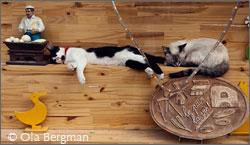 In his book “L’Yonne”, published in 1882, V.A. Malte-Brun, writes that ”These wines had a strong reputation. Henri IV (1553–1610) preferred them over the top wines from Burgundy and Bordeaux. The turnover was high and the business easy and lucrative. The fertile soil gave abundant harvests. However, the population decreased rapidly, there were numerous fires and the villagers began to move elsewhere.
In his book “L’Yonne”, published in 1882, V.A. Malte-Brun, writes that ”These wines had a strong reputation. Henri IV (1553–1610) preferred them over the top wines from Burgundy and Bordeaux. The turnover was high and the business easy and lucrative. The fertile soil gave abundant harvests. However, the population decreased rapidly, there were numerous fires and the villagers began to move elsewhere.
Today Coulanges-la-Vineuse is still recovering from the phylloxera and a market that underwent big changes. This is a situation it shares with most of the villages around Auxerre, except for Chablis. While practically all AOC-classed land on the Côte d’Or is planted with vines there are still considerable areas in this part of Burgundy that are without vines.
Despite being a fairly large village there is not much commerce in Coulanges-la-Vineuse. You’ll find a few shops here including a bakery. Domaine Maltoff – Odile and Jean Pierre – on Rue d'Aguesseau offers both chambres d'hôtes and a plat du soir together with the wines of the domaine. The portfolio holds Bourgogne Coulanges-la-Vineuse in all three colours, Bourgogne Passetoutgrains, Crémant de Bourgogne and Ratafia. The Bourgogne Coulanges-la-Vineuse “Cuvée Aime de Maltoff” is a very nice easy drinking red.
© 2013 Ola Bergman










